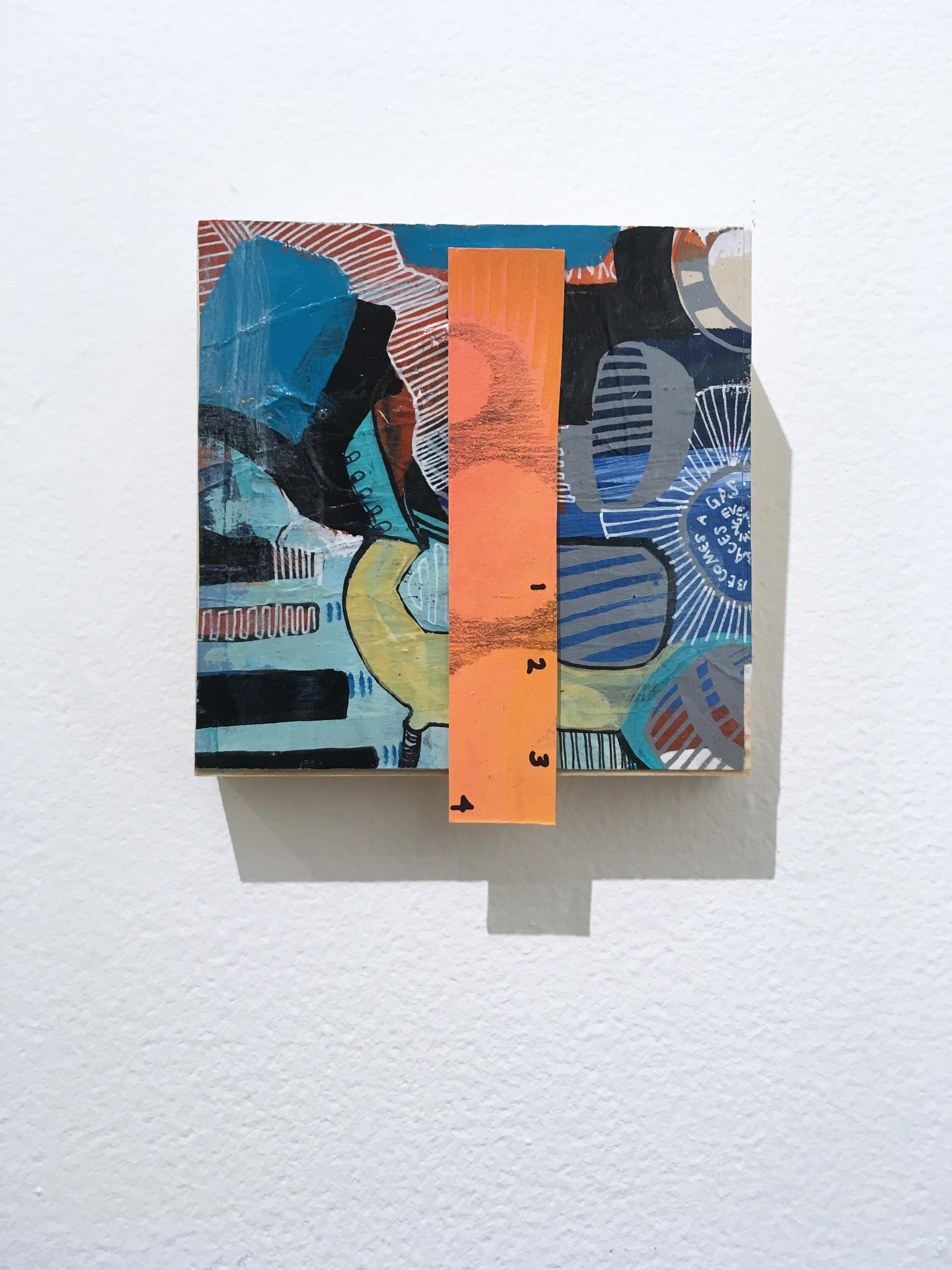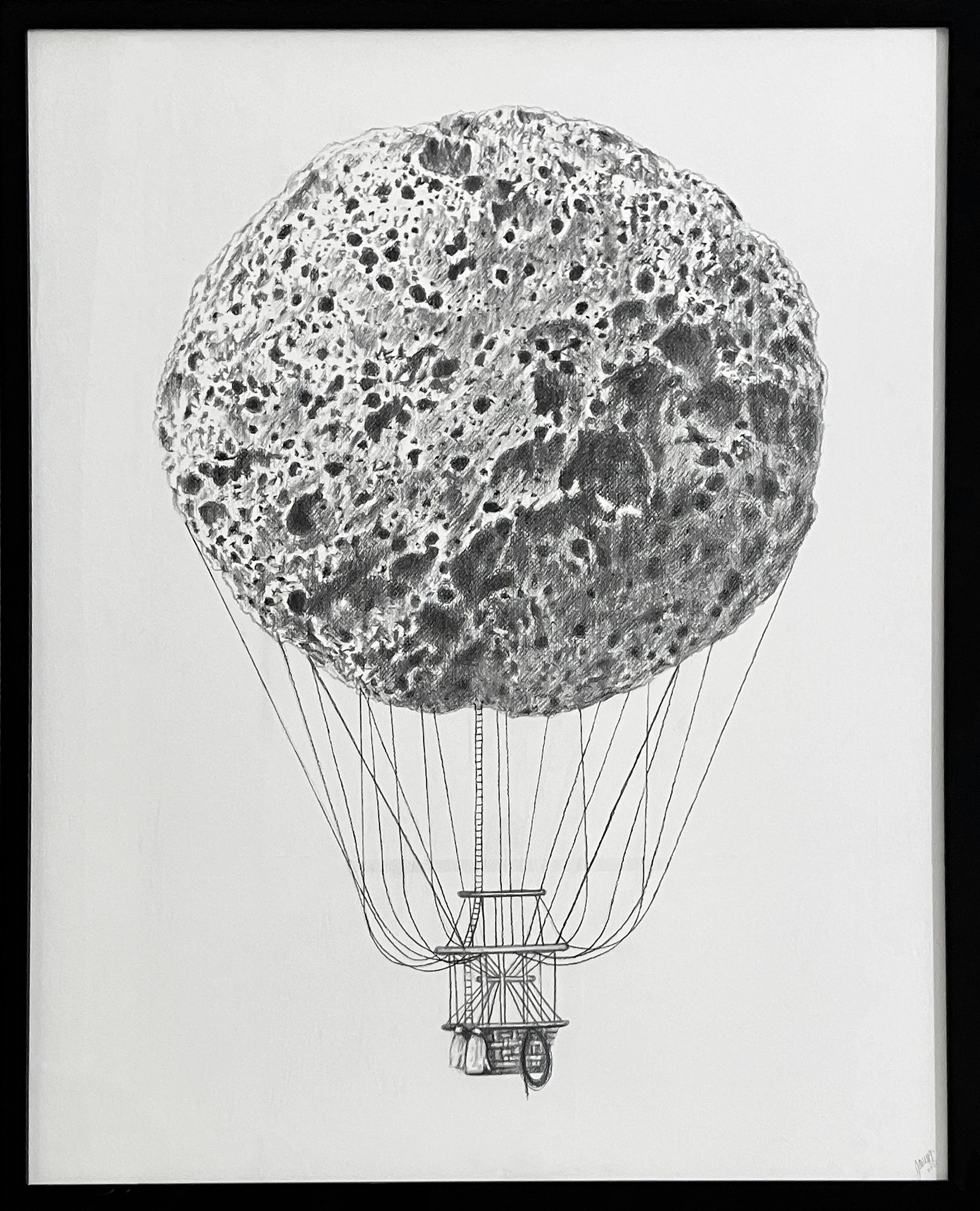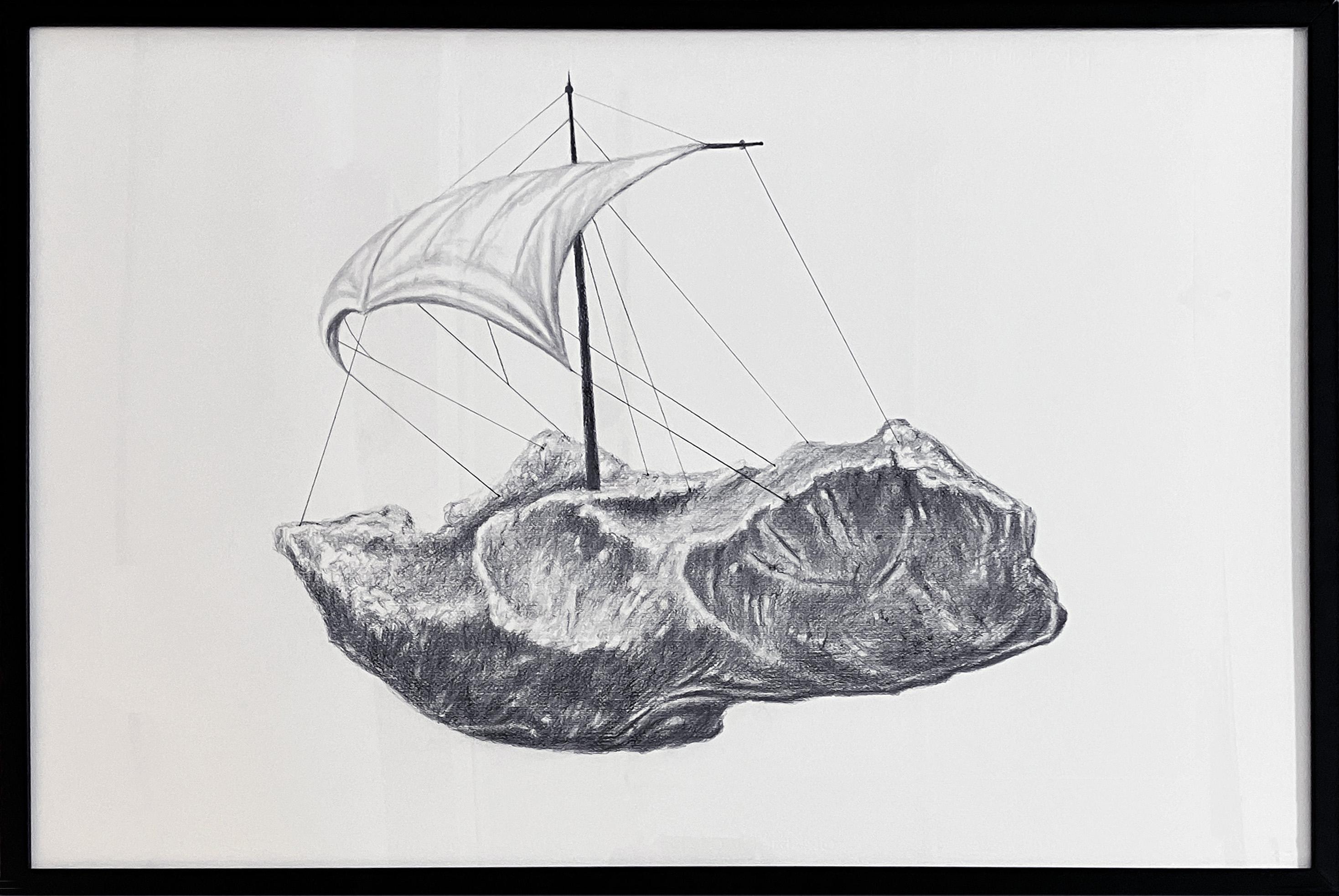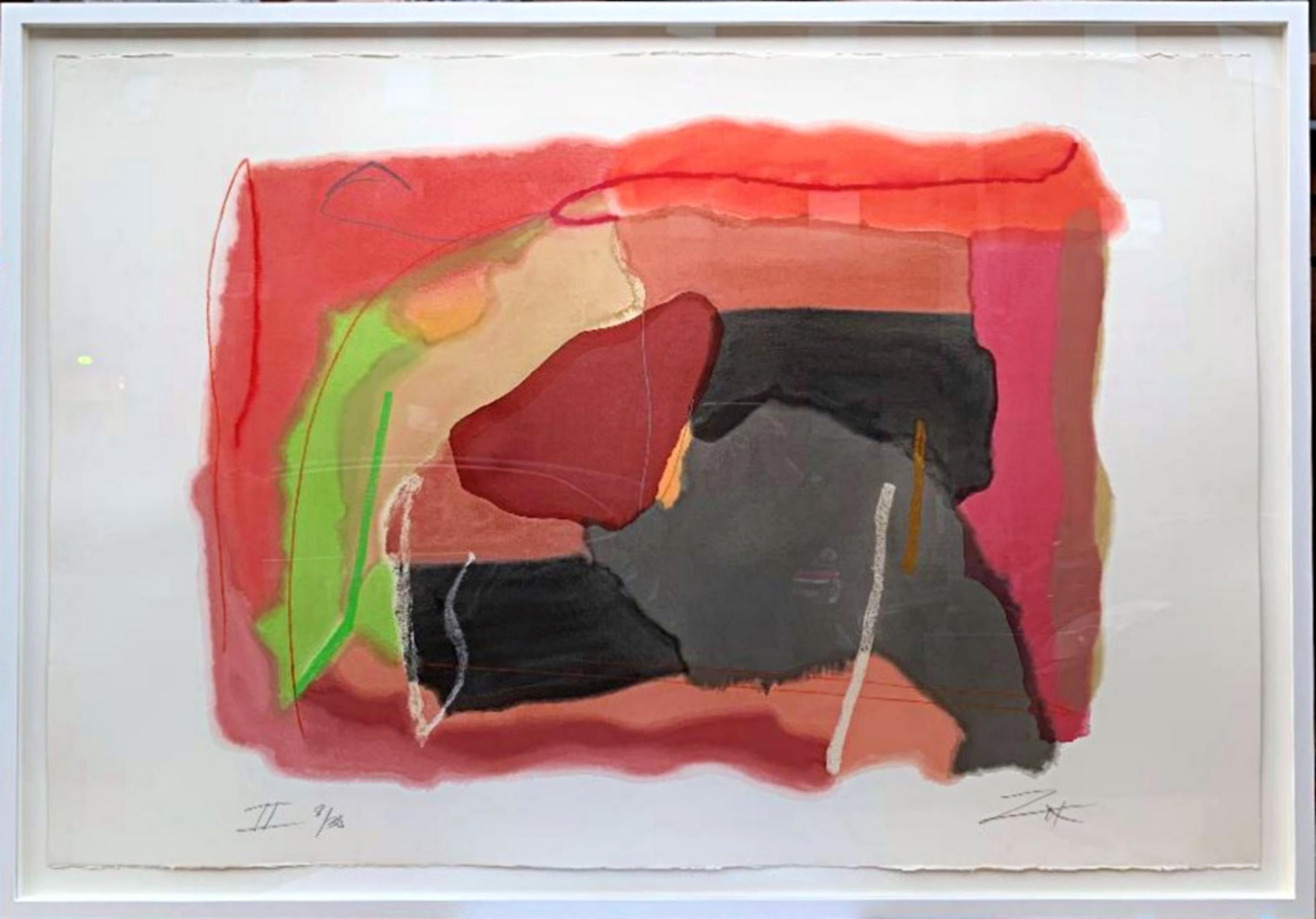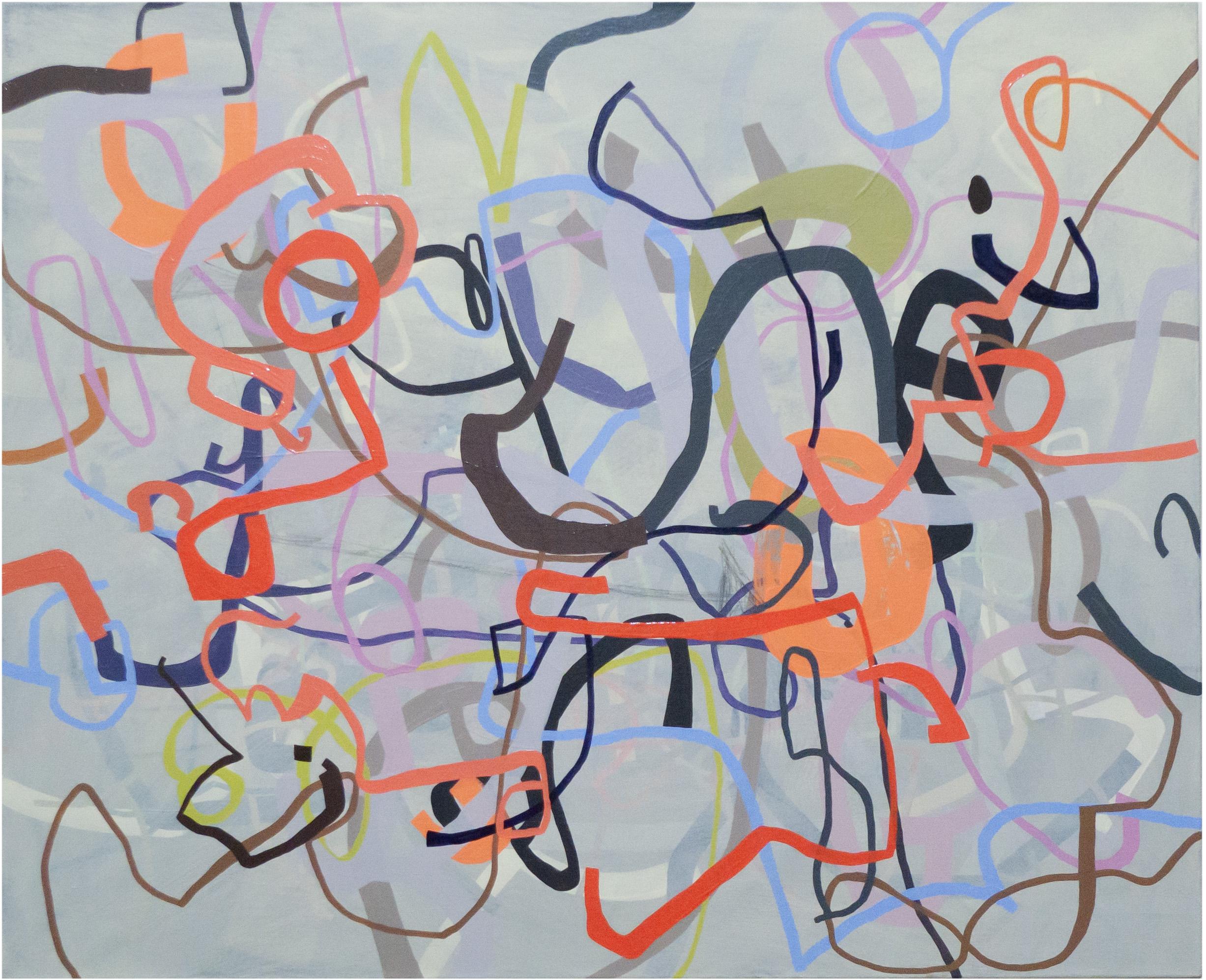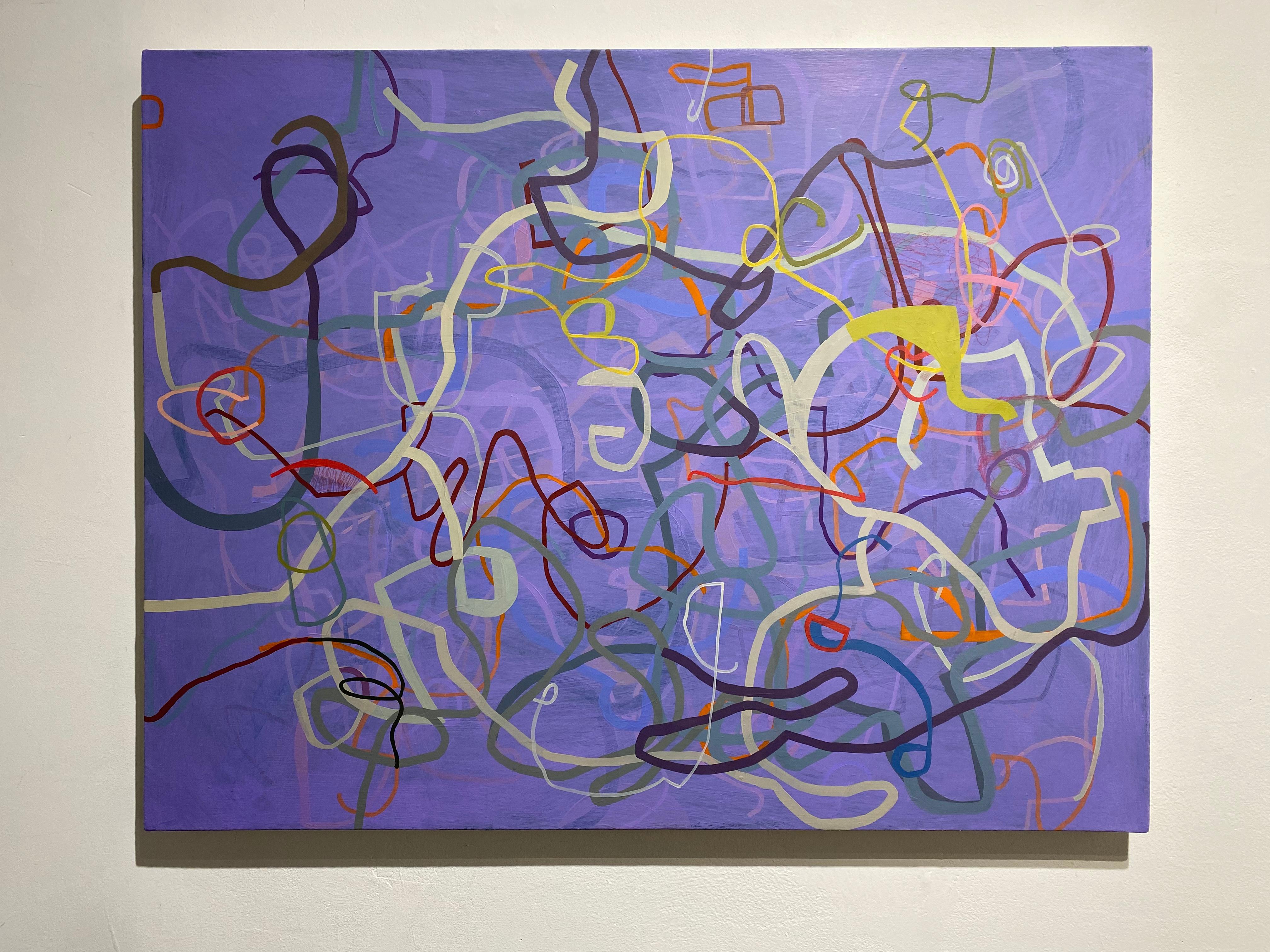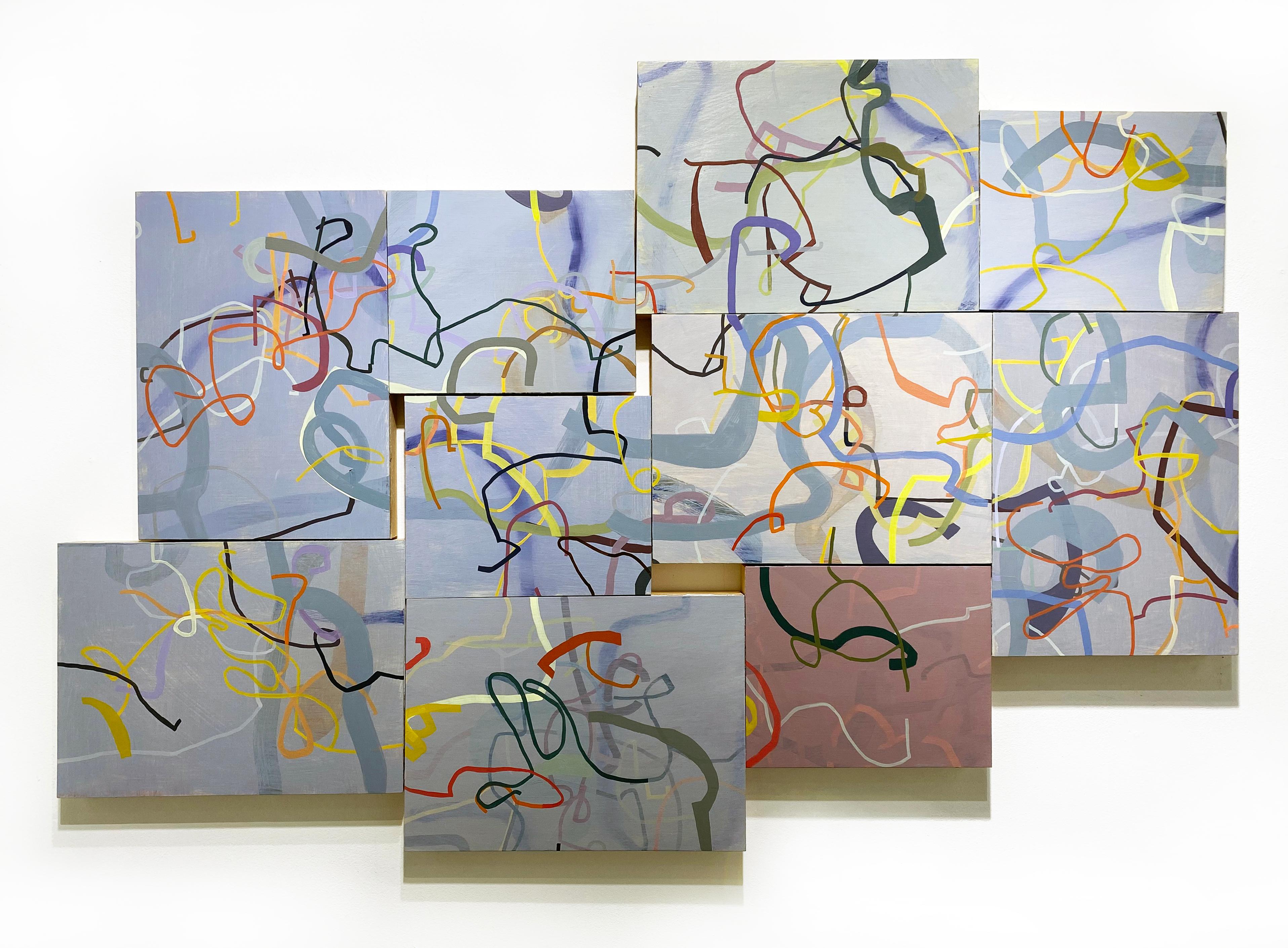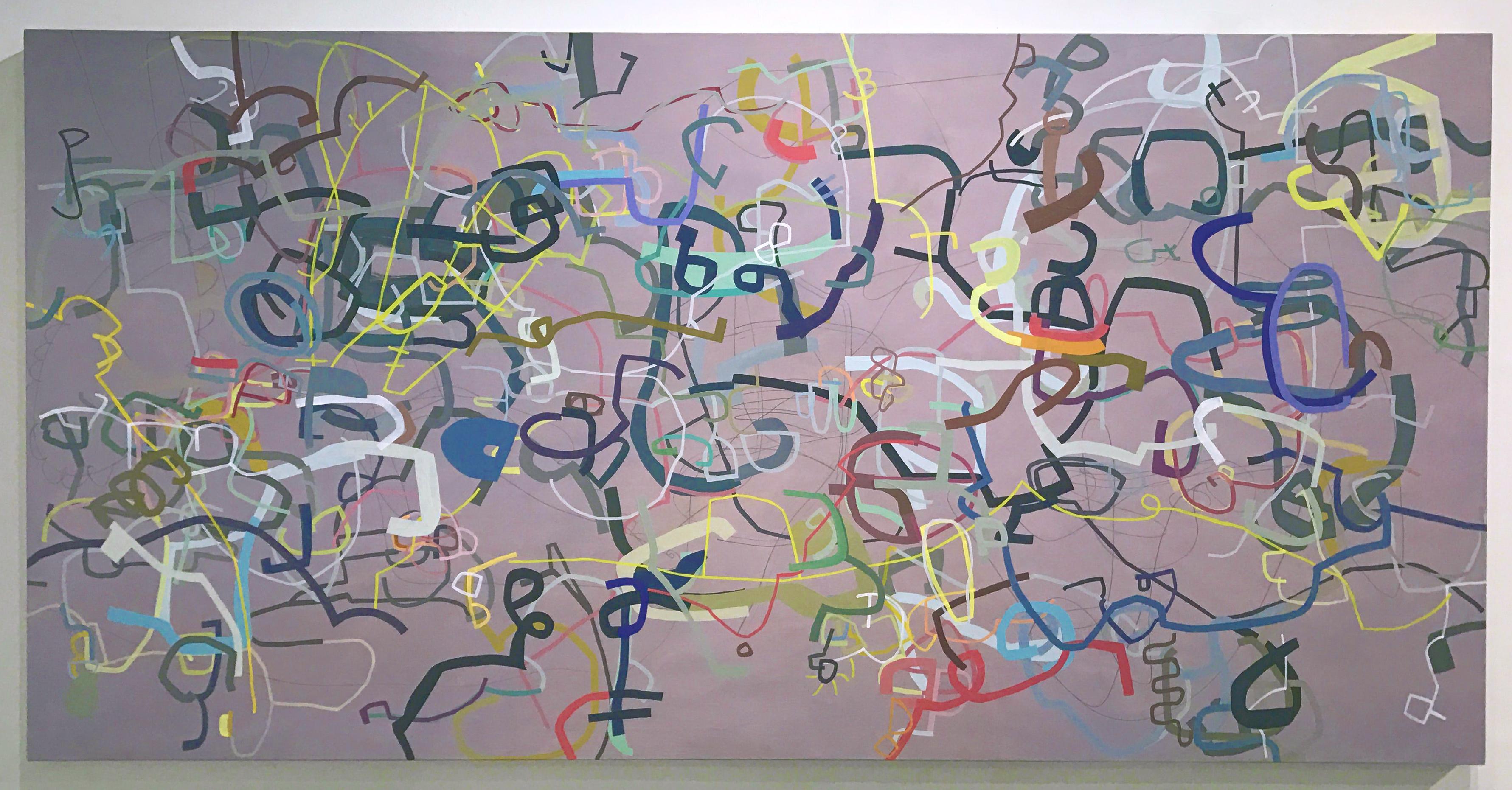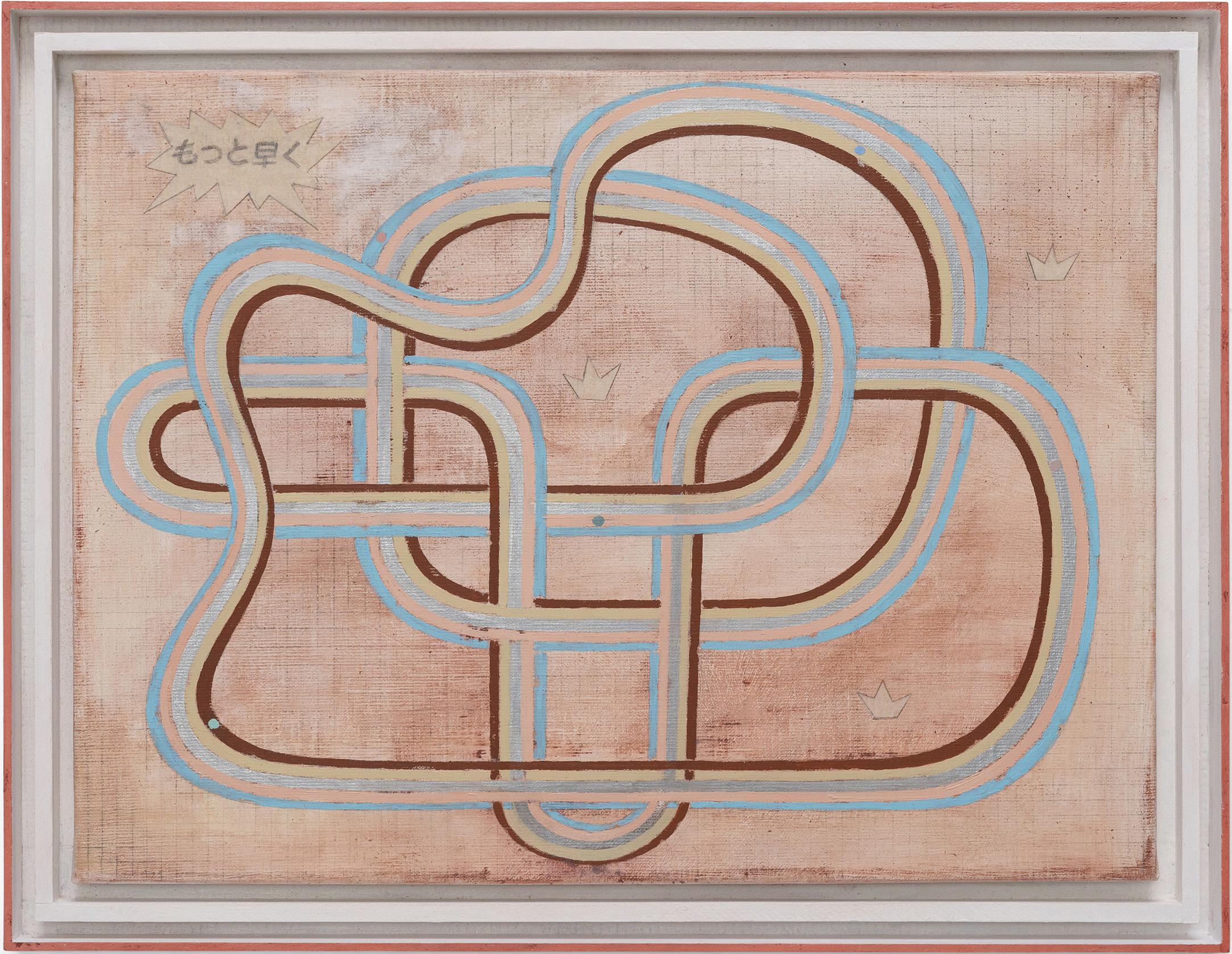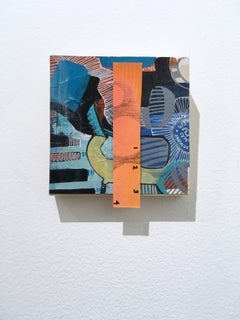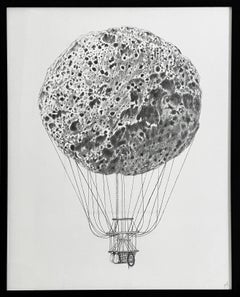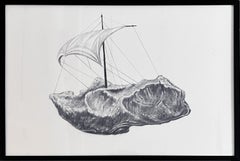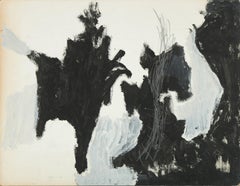
Gestural Monochrome Abstract 1940-50s Oil & Graphite
View Similar Items
1 of 5
Calvin AndersonGestural Monochrome Abstract 1940-50s Oil & Graphite
About the Item
- Creator:Calvin Anderson (1925)
- Dimensions:Height: 11 in (27.94 cm)Width: 14 in (35.56 cm)
- Medium:
- Movement & Style:
- Period:
- Condition:Minor vintage wear.
- Gallery Location:San Francisco, CA
- Reference Number:Seller: B27851stDibs: LU29828658892
Authenticity Guarantee
In the unlikely event there’s an issue with an item’s authenticity, contact us within 1 year for a full refund. DetailsMoney-Back Guarantee
If your item is not as described, is damaged in transit, or does not arrive, contact us within 7 days for a full refund. Details24-Hour Cancellation
You have a 24-hour grace period in which to reconsider your purchase, with no questions asked.Vetted Professional Sellers
Our world-class sellers must adhere to strict standards for service and quality, maintaining the integrity of our listings.Price-Match Guarantee
If you find that a seller listed the same item for a lower price elsewhere, we’ll match it.Trusted Global Delivery
Our best-in-class carrier network provides specialized shipping options worldwide, including custom delivery.You May Also Like
"Garage, " Mixed-Media Painting
Located in Chicago, IL
Entitled “Garage,” this work by Chicago artist Patrick Fitzgerald is one of a series of “track paintings” that materialize the imagined tracks navigated by his miniature soap-box car...
Category
21st Century and Contemporary Outsider Art Abstract Paintings
Materials
Acrylic, Mixed Media, Board, Color Pencil, Graphite
My 80's Heart "Token 7" 2019, gouache, acrylic, graphite, panel, blue, orange
By Catherine Hart
Located in Jersey City, NJ
My 80's Heart "Token 7" 2019, gouache, acrylic, graphite, panel, blue, wood, orange
Category
2010s Contemporary Abstract Paintings
Materials
Acrylic, Gouache, Panel, Wood Panel, Illustration Board, Graphite
Viaje redondo. Framed. Painting From the series Plato’s Heaven
Located in Miami Beach, FL
The theory of Heaven is a novelty that Plato introduced to philosophy. Inspired by this concept, the artist proposes a series of works where I imagine and recreate possible worlds on...
Category
2010s Abstract Abstract Paintings
Materials
Cardboard, Graphite
Meteorito impulsado por el viento. Framed. From the series Plato’s Heaven
Located in Miami Beach, FL
The theory of Heaven is a novelty that Plato introduced to philosophy. Inspired by this concept, the artist proposes a series of works where I imagine and recreate possible worlds on...
Category
2010s Abstract Abstract Paintings
Materials
Graphite, Cardboard
Dexter's Choice, State II, signed mixed media watercolor (unique variant) Framed
By Larry Zox
Located in New York, NY
Larry Zox
Dexter's Choice, State II, ca. 1990
Mixed media, Watercolor pochoir, and Oil stick Wax, Water-Based Crayons, on heavy Arches museum watercolor rag paper with deckled edges
40 × 60 in
101.6 × 152.4 cm
Edition 8/30 (unique variant)
Frame included
Measurements:
Sheet: 40 inches (vertical) by 60 inches (horizontal)
Frame: 42 inches x 62 inches x 1 inch
Dexter's Choice, State # II is a unique, mixed media work from an edition of 30 unique variants done in pochoir, (25 stencils, 14 colors). Here, Zox uses watercolor instead of inks, which is applied to heavy 300 lb. watercolor paper. Although it is a multiple signed and numbered from the edition of 30, each work of art is unique because of how the paper receives the watercolor brush. In addition, this work is created like a mixed media painting because it has 11 lines added by hand with wax and water based crayons and oil sticks. The unique watercolor technique that Zox employed in making "Dexter's Choice" is documented in the textbook, "Screen Printing: Water Based Techniques,Roni Henning, NYIT ".
Dexter's Choice was published by Images Gallery, and this work was acquired directly from the publisher before they sold out. This work is elegantly floated and framed in a white wood frame.
Accompanied by gallery issued Certificate of Guarantee
Larry Zox Biography:
A PAINTER who played an essential role in the Color Field discourse of the 1960s and 1970s, Larry Zox is best known for his intensely and brilliantly colored geometric abstractions that question and violate symmetry.1 Zox stated in 1965: “Being contrary is the only way I can get at anything.” To Zox, this position was not necessarily arbitrary, but instead meant “responding to something in an examination of it [such as] using
a mechanical format with X number of possibilities.”2 What he sought was to “get at the specific character and quality of each painting in and for itself,” as James Monte stated in his introductory essay in the catalogue for Zox’s 1973–1974 solo exhibition at the Whitney Museum of American Art.3 Zox’s robust paintings reveal
a celebrated artist and master of composition who is explored and challenged the possibilities of Post-Painterly Abstraction and Minimalist pictorial conventions.
Zox began to receive attention in the 1960s when he was included in several groundbreaking exhibitions of Color Field and Minimalist art, including Shape and Structure (1965), organized by Henry Geldzahler and Frank Stella for Tibor de Nagy, New York, and Systemic Painting (1966), organized by Lawrence Alloway for the Solomon R. Guggenheim Museum, New York. In 1973–1974, the Whitney’s solo exhibition of Zox’s work gave recognition to his significance in the art scene of the preceding decade. In the following year, he was represented in the inaugural exhibition of the Hirshhorn Museum and Sculpture Garden, Wahsington, DC, which acquired fourteen of his works.
Zox was born in Des Moines, Iowa in 1937. He attended the University of Oklahoma and Drake University, Des Moines, Iowa, and then studied under George Grosz at the Des Moines Art Center. In 1958, Zox moved to New York, joining the downtown art scene. His studio on 20th Street became a gathering place for artists, jazz musicians, bikers, and boxers, and he occasionally sparred with visiting fighters. He later established a studio in East Hampton, a former black smithy used previously by Jackson Pollock.
In his earliest works, such as Banner (1962) Zox created
collages consisting of pieces of painted paper stapled onto sheets of plywood. He then produced paintings that were illusions of collages, including both torn- and trued-edged forms, to which he added a wide range of strong hues that created ambiguous surfaces. In paintings such as For Jean (1963), he omitted the collage aspect of his work and applied flat color areas to create more complete statements of pure color and shape. He then replaced these torn and expressive edges with clean and impersonal lines that would define his work for the next decade.
From 1962 to 1965, he produced his Rotation series, at first creating plywood and Plexiglas reliefs, which turned squares into dynamic polygons. He used these shapes in his paintings as well, employing white as a foil between colors to produce negative spaces that suggest that the colored shapes had only been cut out and laid down instead of painted. The New York Times in 1964 wrote of the works in show such as Rotation B (1964) and of the artist: “The artist is hip, cool, adventurous, not content to stay with the mere exercise of sensibility that one sees in smaller works.”4
In 1965, he began the Scissor Jack series, in which he arranged opposing triangular shapes with inverted Vs of bare canvas at their centers that threaten to split their compositions apart. In several works from this series, Zox was inspired by ancient Chinese water vessels. With a mathematical precision and a poetic license, Zox flattened the three dimensional object onto graph paper, and later translated his interpretation of the vessel’s lines onto canvas with masking tape, forming the structure of the painting.
The Diamond Cut and Diamond Drill paintings...
Category
1990s Color-Field Abstract Drawings and Watercolors
Materials
Crayon, Oil, Watercolor, Monoprint, Mixed Media, Graphite
Difficult Furniture (toity)
By Mark Masyga
Located in New York, NY
24"x30" oil, graphite on canvas, signed on reverse by the artist. This contemporary abstract painting by New York artist, Mark Masyga is visually laid out with painted lines of color intertwined and layered on top of each other. The neutral warm grey ground is activated by the multiple layers of paths of blues, beige, cream white, dark greys and near blacks, interspersed with fine curved and bent lines of light green, orange, lavender and rose pink. This is an engaging linear abstract painting with an immense visual depth of field. This painting is featured in a solo show released by the Front Room Gallery in New York, entitled, "Charitable Deceptions".
In this new body of work, the title “Charitable Deceptions,” refers to a passage written by Gabriel García Márquez in which, “…memory eliminates the bad and magnifies the good.” Mark Masyga ruminates on this concept through his process of addition and subtraction in his compositional constructions. The linear abstract paintings in this exhibition chronicle a passage of time as explored through the artist’s application...
Category
2010s Abstract Abstract Paintings
Materials
Canvas, Oil, Graphite
Recently Viewed
View AllMore Ways To Browse
Vintage Ballet Poster
Vintage Sf Posters
Black Whale
Bronze Female Abstract
Early 19th Century American Portraits
Etching Martin
Folio Cover
Large Garden Mirrors
Minimal Print Ink
Movie Night
Punk Photography
Railroad Paper
Russian Painted Plates
Sexy Photo
Slim Aarons Florida Palms
Toulouse Lautrec Original Print
African Woman Sculpture
Carriage Prints

